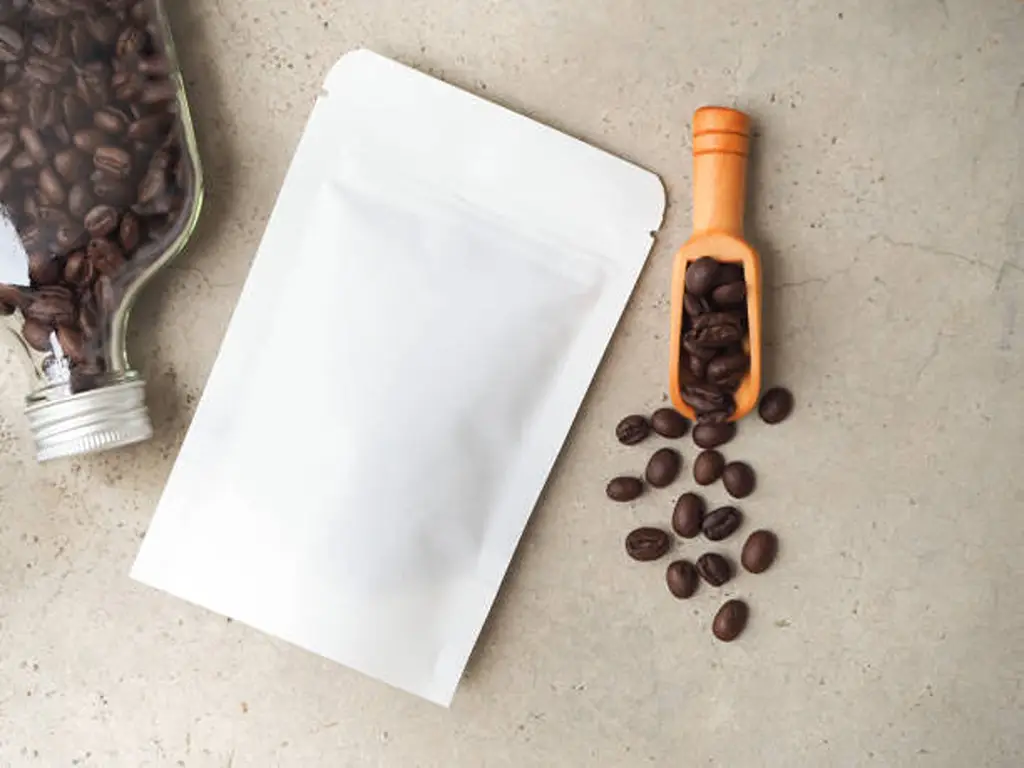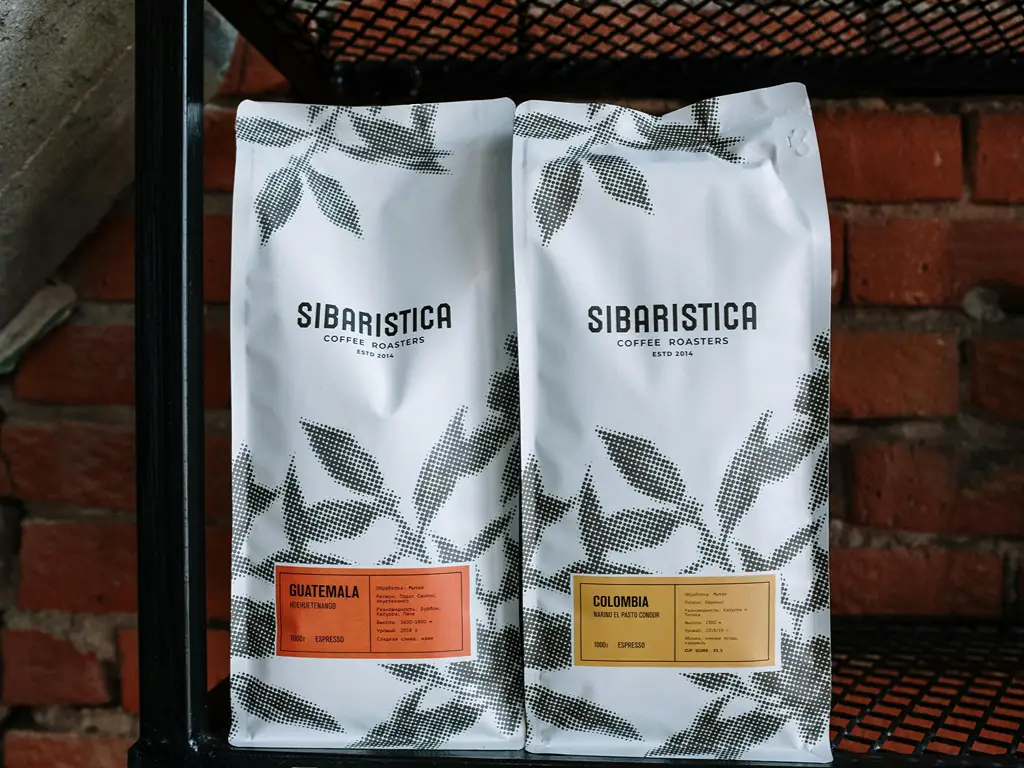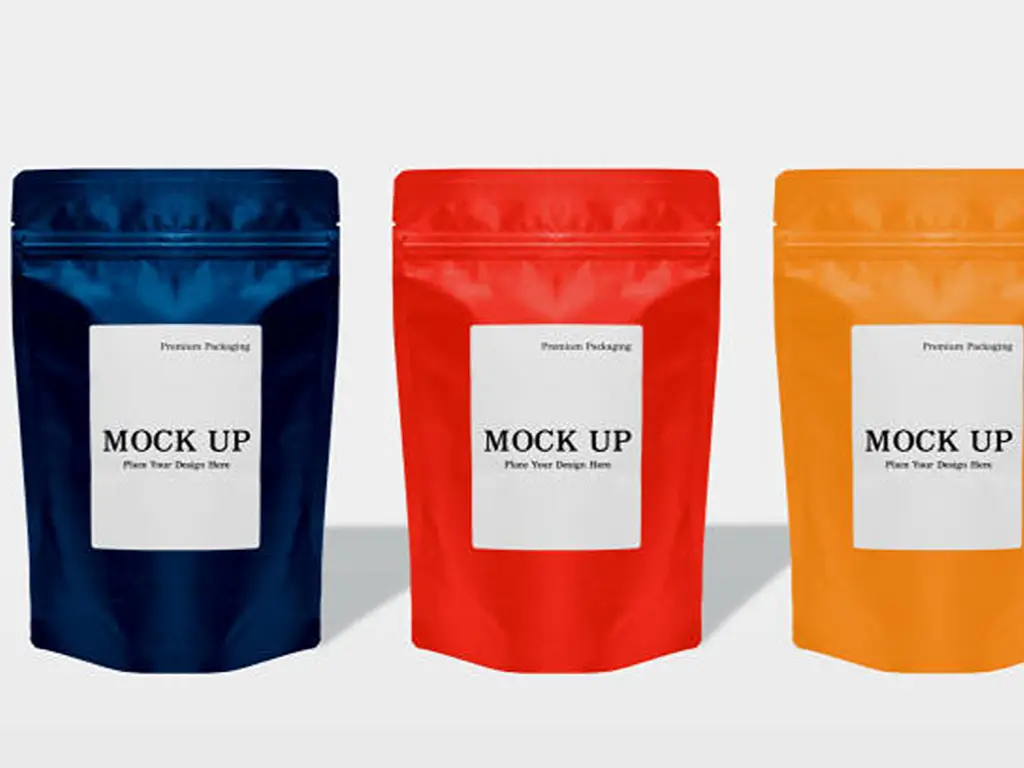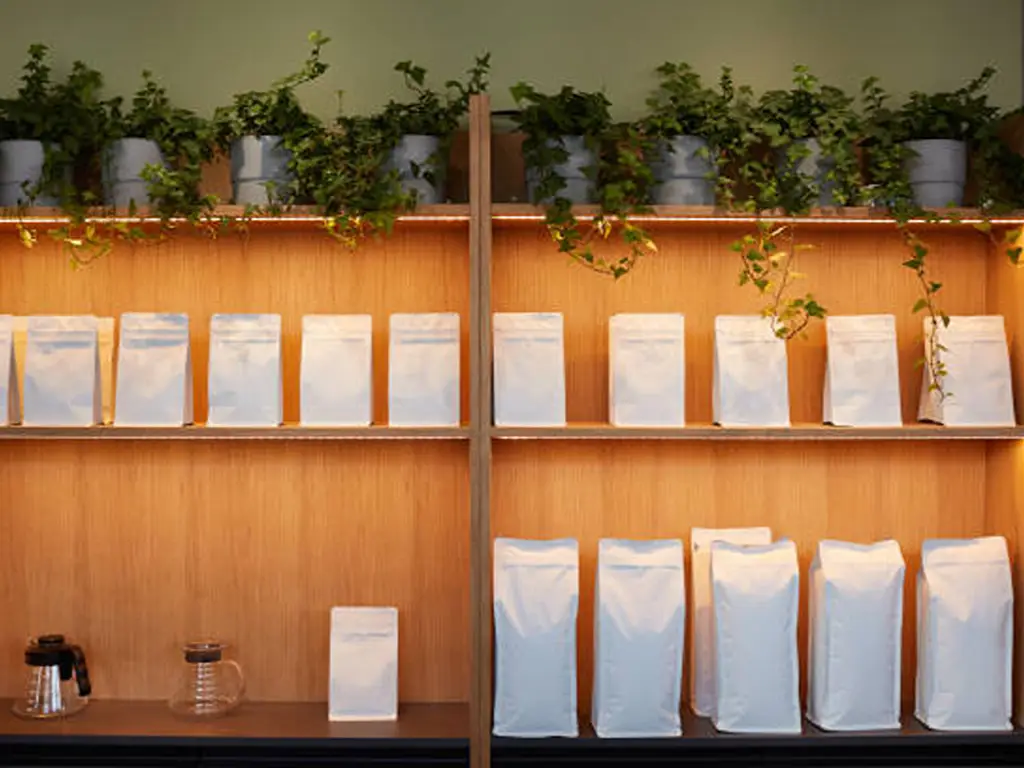Coffee bags are not just a container to keep the beans. They are critical in keeping the food fresh, retaining the taste, and delivering a high-quality experience to the consumer. There is a great range of bag sizes and types in the market, and it can be confusing to select the right one. This guide will take you through the significance of coffee bag size, how to select the right size of coffee bag to use in your roastery, and how to make your coffee packaging sustainable.
Why Coffee Bag Size is Crucial for Freshness and Flavor
Freshness is the most important thing when it comes to coffee. The size of the bag that you use can greatly affect the freshness of coffee and the taste of your product. Coffee beans still emit carbon dioxide (CO 2 ) after roasting and this may influence the taste as well as the shelf life of the beans. If the bag is too big, it will have excessive air and headspace, which will result in accelerated degradation of coffee. Conversely, a bag that is too small can result in an over-pressurized package, which can result in ruptures or poor packaging integrity.
The typical coffee bag size (e.g., 8 oz, 12 oz, 1 lb) is to maintain the balance between the quantity of coffee in the bag and the appropriate quantity of air to guarantee the appropriate degassing. A bag that is too small can fail to provide sufficient space to allow the beans to expel CO 2, which influences flavor. Conversely, an oversized bag will contain too much air, accelerating the oxidation reaction, leading to stale coffee.
The kind of coffee is also worth considering. Small-scale producers might need different sizes than large-scale producers. Specialty coffee drinkers will want smaller bags to guarantee freshness, whereas large-scale companies might want to package in larger gusset bags.
Selecting the appropriate coffee packaging design will help your coffee to be as fresh as possible, giving your customers the best experience and keeping your brand intact.

A Visual Guide to Common Coffee Bag Sizes
Choosing the right coffee bag size is essential for both the preservation of your coffee’s flavor and the convenience for your customers. Let’s break down the most common sizes used in retail and wholesale coffee packaging. These sizes serve different needs, from single servings to bulk orders.
| Coffee Bag Size | Weight (oz / g) | Number of Cups (approx.) | Common Cup Size (Height × Width cm) | Suitable for | Features |
| 8 oz | 227 g | 22-25 cups | 18-20 × 12 | Gifts, tasting, small-sized coffee | Small package, suitable for preservation |
| 12 oz | 340 g | 30-35 cups | 22-24 × 13 | Household, ultra-premium, electric commercial | Mainstream coffee size, low cost |
| 1 lb | 454 g | 40-45 cups | 25-28 × 14 | Daily use, medium-sized packaging | Large capacity, single-use pack |
| 5 lb | 2.27 kg | About 200 cups | 35-40 × 18-20 | Coffee shops, office rooms, large scale needs | Bulk purchase, catering industry |
| 10-25 lb | 4.5-11.3 kg | 450-1100+ cups | Height up to 60 cm+ | Wholesale, large-scale industry use | Very large capacity, cost-effective, suitable for bulk distribution |
8 oz (~227 g) Coffee Bags
A coffee bag of 8 oz contains about 227 grams of coffee beans, which can make about 22 to 25 cups of coffee, depending on the standard of 10g per cup. It is small, with an average height of 1820 cm and a width of 12 cm, which makes it suitable to hold in the hands or to put in gift boxes. This is an ideal size to use in sampler packs, holiday sets or low-end specialty coffee. 8 oz bags are convenient for packing and shipping to small roasters or online retailers, and they are also useful in attracting new customers who want to taste something new. The smaller capacity, compared to the 12 oz one, helps keep coffee fresh and minimizes waste.
12 oz (~340 g) Coffee Bags
The 12 oz bag contains approximately 340 grams of coffee that can be used to make 30 to 35 cups. It has a standard size of 22-24 cm tall and approximately 13 cm wide, which is a trade-off between capacity and portability. It is the most popular retail standard coffee bag size- you can find it in supermarkets and online shops. This is a size that will last a household 1-2 weeks of coffee consumption without affecting the freshness. It is a better value per gram than 8 oz, and still is easier to store and retain flavor than a full pound.
1 lb (~454 g) Coffee Bags
A 1 lb (16 oz) bag of coffee has about 454 grams of beans, which will make 40 to 45 cups. The bag is typically 2528 cm tall and approximately 14 cm wide, which is considerably larger than a 12 oz bag. This size is the main product of many small-to-medium roasters. To the consumers, it is a good balance between bulk price and everyday use. Although it is cheaper than its smaller counterparts, it needs to be stored carefully to retain its flavour over a period of time.
5 lb (~2.27 kg) Coffee Bags
A 5 lb bag of coffee contains approximately 2.27 kilograms of coffee, which is sufficient to make approximately 200 cups. These bags are usually 35-40 cm tall and 18-20 cm wide, and they are usually made of thicker materials and have airtight seals to facilitate long-term storage. They are not widespread in retail, but they are very popular when it comes to wholesale, cafes, offices, or big families. This size significantly lowers unit price and packaging frequency compared to 1 lb bags, which is why it is the most popular in high-consumption settings.
Larger Coffee Bag Sizes: 10 lb, 25 lb, and Beyond
The bulk sizes of 10 lb or 25 lb are primarily used by roasting plants, coffee wholesalers, or large chain brands. These are generally woven or heavy kraft bags, which are more than 60 cm tall. A 10 lb bag will make about 450 cups; a 25 lb bag can make more than 1,000. They are also ideal in long-term inventory or secondary packaging because they have the lowest unit cost. The bags are not meant to be sold directly to the consumer but rather form the basis of the coffee supply chain where efficiency of transport, stability of stacks and moisture resistance are paramount.
Note: The sizes given here are approximations of common industry packaging. The actual dimensions can vary based on brand design, material (e.g., stand-up pouches, flat bottom bags, valve bags), seal type, bean roast level, and packing density. Before ordering, always check the specifications or samples of your packaging supplier.

More Than Just Size: Common Coffee Bag Types and Their Uses
The bag size also matters a lot, but the type of coffee bag you use also determines how your coffee is preserved and presented. Bags come in different types and can be used in different ways, and can be chosen based on your business needs.
The typical kinds of bags are as follows:
– Side-Gusseted Bags: This is the most common and general-use coffee bag. They are also expandable and therefore they fit various sizes and types of coffee. Gusset bags are also retail and wholesale bags, especially for bulk coffee.
-Stand-Up Pouches: These are pouches that are able to stand up and are very good for keeping on shelves. They are usually used in retail bags (12 oz or 1 lb) and can be sealed with a zip lock to preserve the product.
–Flat Pouches: Flat bags are small and perfect in terms of small quantities of coffee (like 100g or 250g bags). They are not standalone but are perfect in the case of smaller and cheaper products or samples.
–Other Bags: Quad-seal bags are also available; these are premium coffee packaging bags. These bags are usually used by specialty roasters to produce large and quality batches.
Each of the types of bags is beneficial and is used according to the size of the batch and the target market of the brand. A custom coffee bag can have special features like resealable zippers or one-way degassing valves that make a huge difference in the life of the product.
How to Choose the Right Coffee Bag Size for Your Roastery
The process of choosing the appropriate standard coffee bag size to use in your roastery is a step-by-step process. The decision will be based on a number of factors, such as the size of your business, customer preferences, and even the kind of coffee you serve. This is the way you can make an informed decision:
1. Evaluate Your Market: Think about your target market. Do you sell to end customers or do you supply to cafes and restaurants? Retail customers would like to have smaller bags (8 oz to 12 oz), whereas bulk buyers would like to have larger ones (5 lb or 10 lb).
2. Know Your Production Quantity: This will also be determined by the quantity of coffee you roast on a daily or weekly basis, which will determine the size of the bag. When you roast in small batches, you may consider using smaller bags to maintain freshness. The big roasters can be biased towards bigger sizes.
3. Branding and Presentation: Custom-printed bags that are larger and attractive can be very good in terms of brand visibility. In case you want to create a high-end impression, you can use flat-bottom bags or quad-seal bags to make your packaging look good.
4. Customer Convenience: Consider the way your customers drink coffee. Do they consume it on a daily basis? In that case, they might want smaller bags to preserve them. Bigger sizes are more cost-effective for customers who purchase in large quantities or operate a coffee shop.
5. Storage and Shipping: Bags that are larger may occupy more shelf space and are more expensive to ship. Smaller bags can be more economical, but they can lead to increased purchases.
The selection of the coffee packaging design must be based on practicality as well as your branding strategy. Keep in mind that a coffee bag is not a container; it is an element of the experience of your product.
Sustainability in Coffee Bag Sizing: How to Reduce Waste and Packaging Costs
In the modern, environmentally aware society, the concept of sustainability is not a mere buzzword anymore. Coffee roasters are becoming more interested in finding ways to minimize the waste and environmental impact of their packaging. This starts with the selection of the appropriate standard coffee bag size and transitioning to more sustainable operations.
1. Right-Sizing Your Bags: Custom-sized bags will allow you to cut out the excess space, which means less wasted material and cheaper shipping. By not getting bags that are too big, you will limit the amount of packaging, which can lead to cost savings and environmental gains.
2. Recyclable: Most roasters are moving to more environmentally friendly materials such as rice paper or biodegradable plastics to package their coffee. Not only do these options minimize waste, but they also attract environmentally conscious customers.
3. Reusable Features: Adding resealable zippers or one-way valves that enable coffee to degas, but not air, can increase the shelf life of the coffee, minimizing spoilage. These characteristics add to sustainability and product life.
4. Minimalist Design: You can also minimize the use of material by simplifying your coffee packaging design. Not only will a minimalist design with fewer additives save you on packaging expenses, but it will also meet the current consumer demand for sustainable products.
5. Local Sourcing: To minimize the carbon footprint of long-distance transportation, it is possible to collaborate with local suppliers to package products.
You can minimize the environmental impact of your business and make the coffee industry more sustainable by paying attention to the size of your bag and the packaging material. By having the right proportions of size, material, and design, sustainability can be incorporated into the very identity of your brand.

The Right Bag Size Needs the Right Packaging Partner
The selection of the appropriate size of coffee bag does not only influences the storage. It affects freshness, shelf appeal, and customer experience. Size is not the whole story. The structure, materials, and functional features contribute to the protection of your product and the presentation of your brand.
Baishen Pack is a company that deals with custom flexible packaging of coffee and other food products. We assist roasters in selecting the appropriate size and format of the bag to fit the type of coffee, customer requirements, and sales channels.
Whether you’re packaging 12 oz retail bags or bulk formats for wholesale, we offer:
– A wide range of bag styles and sizes
– Add-ons like degassing valves, resealable zippers, and clear windows
– Sustainable material options and premium finishes
– Fast turnaround and low minimums for custom orders
Looking for guidance on your next coffee packaging project? Contact Baishen Pack to explore custom solutions tailored to your product, your market, and your brand.
Frequently Asked Questions (FAQ)
What is the standard size coffee bag? The most common standard size is 12 oz (340g), widely used in retail. It’s ideal for balancing freshness, portion control, and shelf appeal.
Why is coffee sold in 12-oz bags? 12 oz strikes a balance—enough for daily use over a week or two, while preserving freshness. It’s also rooted in historical retail norms.
How long will a 2lb bag of coffee last? For one person drinking 1–2 cups daily, a 2lb (32 oz) bag can last about 3 to 4 weeks, depending on brew strength and cup size.
How big is a 1lb bag of coffee? A 1lb (16 oz or 454g) coffee bag typically brews around 40 cups. Physically, it varies by bean type and packaging, but often measures ~5″x 10″.


